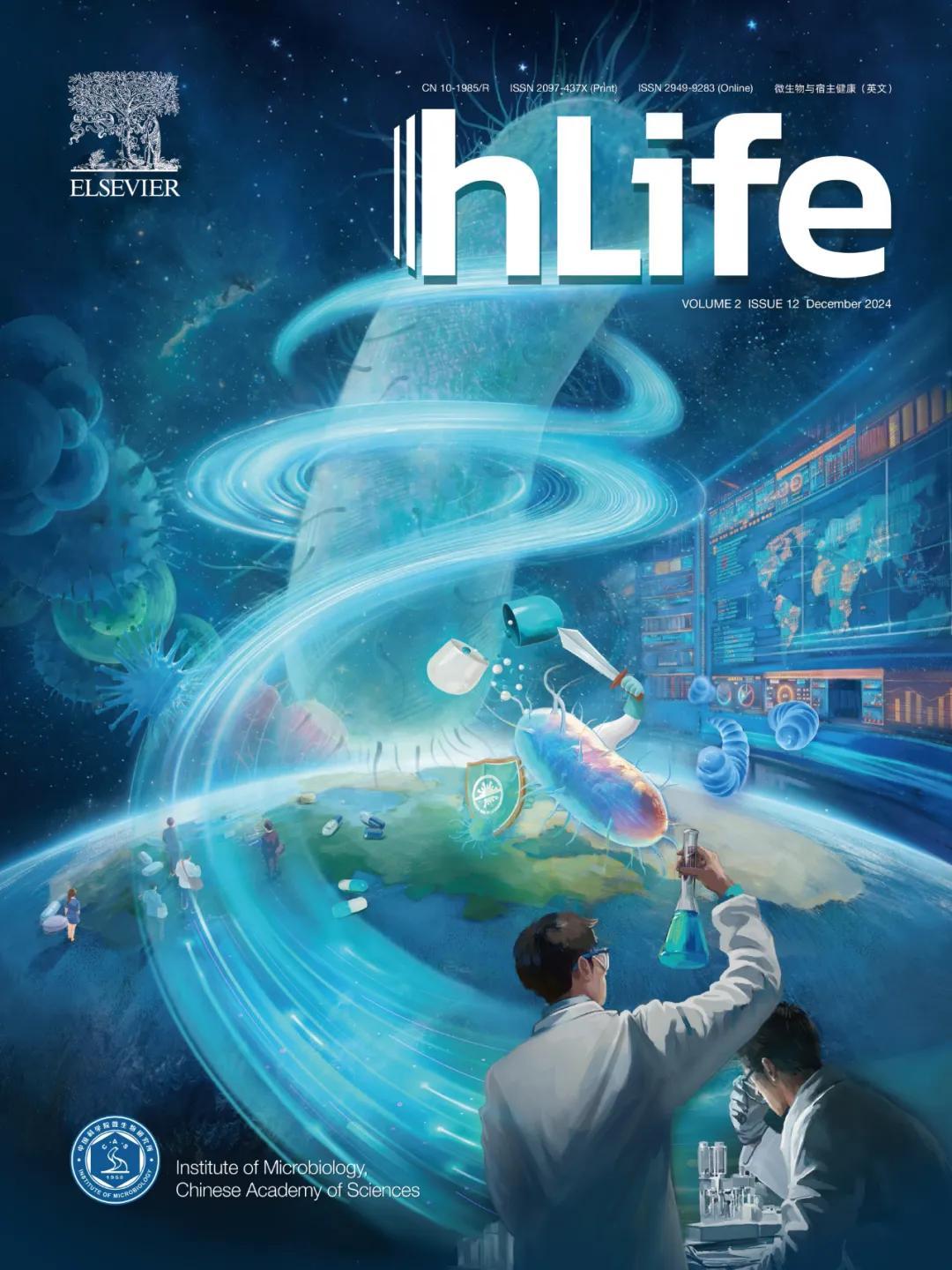

Volume 2 Issue 12
封面解读

肖永红
Antimicrobial resistance (AMR) is a major global public health issue, causing significant damage to global health and the economy. In 2024, the World Health Organization (WHO) released an updated version of the Bacterial Priority Pathogens List (BPPL), including carbapenem-resistant Klebsiella pneumoniae (CRKP). In recent years, there has been a growing identification of K. pneumoniae strains that integrate hypervirulence (hv) and CR phenotypes, resulting in severe clinical outcomes. Highly variable genomes caused by point mutation, recombination, and transfer of mobile genetic elements are the key factors underlying the epidemic success of CRhvKP. To address the drug-resistant bacteria, there is a need for increased policy and financial investment, optimized resource allocation, strengthened development of pathogen resistance surveillance systems, and real-time global information sharing. This cover page underscores the significant challenge of addressing AMR, yet it also emphasizes that through concerted global efforts, we can improve our preparedness and effectiveness in tackling this threat in the future.
导读
1.WHO revised bacterial priority pathogens list to encourage global actions to combat AMR - ScienceDirectScienceDirect
通讯作者:肖永红

The World Health Organization (WHO) has updated its Bacterial Priority Pathogens List (BPPL) for 2024 to combat antimicrobial resistance (AMR), focusing on "One Health" criteria such as treatability, mortality, and resistance trends. The list categorizes pathogens as critical, high, or medium priority, emphasizing the need for new antimicrobials. Notable inclusions are carbapenem-resistantAcinetobacter baumannii(CRAB), carbapenem-resistant Enterobacterales (CRE), and third-generation cephalosporin-resistant Enterobacterales (3GCRE). The AMR crisis, especially with multidrug-resistant gram-negative bacteria, persists, highlighting the urgency for global action, investment, and R&D in diagnostics and therapeutics.

引用:
Ma Y, Chen P, Mo Y, et al. WHO revised bacterial priority pathogens list to encourage global actions to combat AMR.hLife2024; 2: 607–610.
2.Understanding carbapenem-resistant hypervirulent Klebsiella pneumoniae: Key virulence factors and evolutionary convergence - ScienceDirectScienceDirect
通讯作者:肖永红

本文系统阐述了耐碳青霉烯类高毒力肺炎克雷伯菌的重要毒力因子和进化整合的多种机制。

引用:
Chen T, Ying L, Xiong L, et al. Understanding carbapenem-resistant hypervirulentKlebsiella pneumoniae: Key virulence factors and evolutionary convergence.hLife2024; 2: 611–624.
3.Comparison of antigen-specific B cell responses reveals disparity in immunogenicity and memory B cell formation across COVID-19 vaccine platforms - ScienceDirectScienceDirect
通讯作者:华兆林,侯百东

Highlights
Examining the severe acute respiratory syndrome coronavirus 2 (SARS-CoV-2)-specific B cell response allows for a comparison of vaccines in various formats.
The nanoparticle and mRNA vaccines exhibit superior immunogenicity compared with inactivated and recombinant protein vaccines.
Despite inducing a robust germinal center response, the mRNA vaccine elicits a limited number of memory B cells.

引用:
Guo C, Chai X, Baerlike M, et al. Comparison of antigen-specific B cell responses reveals disparity in immunogenicity and memory B cell formation across COVID-19 vaccine platforms.hLife2024; 2: 625–640.
4.De novo design of covalent bonding peptides for target protein - ScienceDirectScienceDirect
通讯作者:周小红,王奇慧,Lip Ket Chin

Highlights
A two-stepde novodesign of covalent bonding peptides for target protein was established.
The reactivity of chemically modified peptides against their target was predicted using a modified Amber ff14SB force field.
Two designs blocked Omicron BA.2 pseudovirus infection with half maximal inhibitory concentrations of 1.07 μM and 1.56 μM.

引用:
Zhou X, Zhu Q, Zheng A, et al.De novodesign of covalent bonding peptides for target protein.hLife2024; 2: 641–652.
5.High-resolution crystal structure of human coronavirus HKU1 receptor binding domain bound to TMPRSS2 receptor - ScienceDirectScienceDirect
通讯作者:陈蓉,徐颖,张水军

This study presents the high-resolution structure of HCoV-HKU1A RBD bound to human TMPRSS2 receptor, which reveals the structural basis for the specificity of receptor binding by HCoV-HKU1. The interface between HCoV-HKU1 RBD and receptor also provides information for the development of vaccines and antivirals against HCoV-HKU1.

引用:
Wang W, Guan J, Ren M, et al. High-resolution crystal structure of human coronavirus HKU1 receptor binding domain bound to TMPRSS2 receptor.hLife2024; 2: 653–657.
6.Myeloid cell diversity: From fundamental biology to disease states - ScienceDirectScienceDirect
通讯作者: Iván Ballesteros, Lai Guan Ng,
Daniela F. Quail, Andrés Hidalgo

The Keystone Symposia conference on Myeloid Cell Diversity, held in Canada, aimed to advance understanding of myeloid cell behavior in health and disease. The conference covered topics from phagocytosis of dead cells to myeloid cell states in disease and aging, fostering multi-disciplinary dialogue. Keynotes included imaging studies of neutrophil behavior, myelopoiesis strategies, and the impact of lifestyle on tumor immunity. The meeting also addressed myeloid metabolism's role in immunotherapy, highlighting the significance of myeloid cell diversity in fundamental biology and disease states.
引用:
Ballesteros I, Ng LG, Quail DF, et al. Myeloid cell diversity: From fundamental biology to disease states.hLife2024; 2: 658–660.
